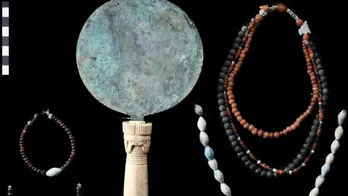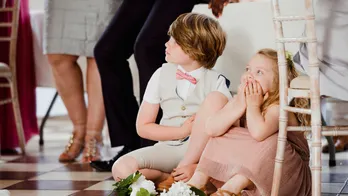Meet the American who coined 'March Madness,' Illinois high school hoops pioneer and visionary H.V. Porter
March Madness afflicts millions of American sports fans each year during springtime.
Victims of the fever exhibit spontaneous outbreaks of basketball jargon, cry over busted brackets and call in sick to work on Thursdays and Fridays.
There is no known cure for March Madness.
But basketballogists know its origin. The malady was first diagnosed in 1939 by Illinois high school sports administrator Henry "H.V." Porter.
FOX NATION'S NEW SERIES ‘MEET THE AMERICAN WHO’ TELLS OF ORDINARY AMERICANS WHO GAVE US EXTRAORDINARY INNOVATIONS
He was as Illinois as a horseshoe sandwich. And he loved high school basketball.
"When the March Madness is on him, midnight jaunts of a hundred miles on successive nights make him even more alert the next day," Porter wrote romantically of the state’s exuberant high school basketball fans during the raucous statewide tournament in March 1939.

H.V. Porter coined the phrase "March Madness" as a high school sports administrator in Illinois in 1939. He entered the Basketball Hall of Fame in 1960. (Illinois High School Association)
It’s the first-known use of a phrase now associated with the wildly popular NCAA men's basketball tournament — first held, coincidentally, in March 1939, just as Porter was penning his "March Madness" essay for "Illinois High School Athlete" magazine.
Decades later, the NCAA adopted and trademarked the phrase.
"Porter was a visionary. He was ahead of his time." — Bruce Firchau, Basketball Museum of Illinois
March Madness swept over the hardwood courts of small-town Middle America long before it emerged from the boardrooms of corporate America. It is now a familiar catchphrase in wider American culture beyond sports.
Porter, its creator, had a poet's soul, an affinity for alliteration and a passion for heartland high school hoops.
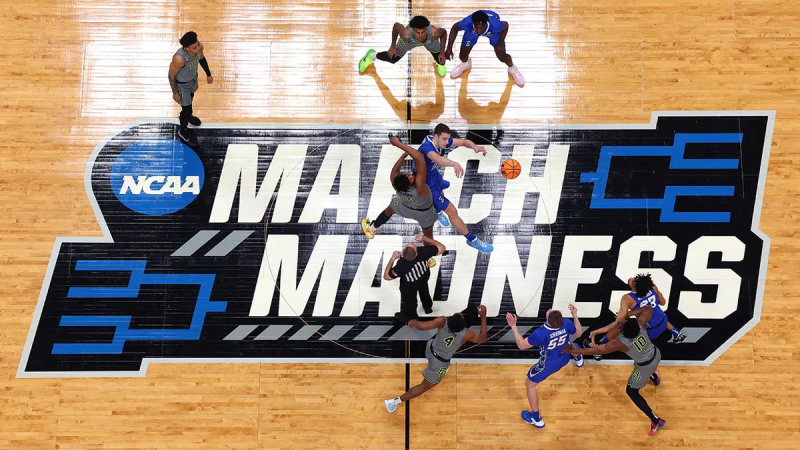
Ryan Kalkbrenner, #11 of the Creighton Bluejays, wins the opening tip over Flo Thamba #0 of the Baylor Bears in the second round of the 2023 NCAA Men's Basketball Tournament at Ball Arena on March 19 in Denver, Colorado. (Jamie Schwaberow/NCAA Photos via Getty Images)
"He was a visionary. He was ahead of his time," Bruce Firchau, chairman of The Basketball Museum of Illinois, told Fox News Digital.
Porter captured the sports spirit of small-town America in the Great Depression.
"The annual tournament of high school boys basketball teams, sponsored by the Illinois High School Association, grew from a small invitational affair in 1908 to a statewide institution with over 900 schools by the late 1930s," the association writes in its online history.
MEET THE AMERICAN WHO DESIGNED THE EMPIRE STATE BUILDING, NEW YORK CITY NATIVE ARCHITECT WILLIAM F. LAMB
"In a time before television, before the college game became popular with the average fan, before professional leagues had established a foothold in the nation’s large cities, basketball fever had already reached epidemic proportions in the Land of Lincoln."
Porter didn't fight the fever. He helped spread it.
Born with basketball
Henry Van Arsdale Porter was born in Manito, Illinois, on Oct. 2, 1891.
The game of basketball was born two months later, in December 1891, created by physical education teacher Dr. James Naismith at the Springfield, Massachusetts YMCA, now Springfield College.
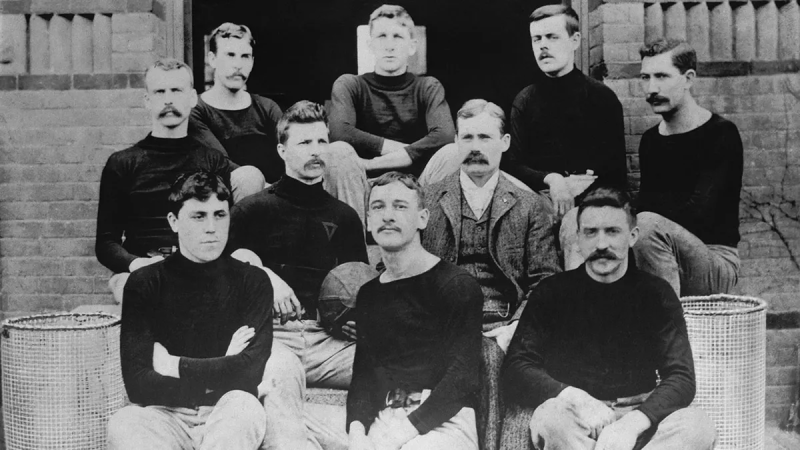
The first basketball team, consisting of nine players and their coach on the steps of the Springfield College Gymnasium in 1891 are shown. Dr. Naismith is in civilian clothes and grouped about him are left to right from back row: John G. Thompson, Eugene S. Libby, Edwin P. Ruggles, William R. Chase, and T. Duncan Patton. In the center row are Frank Mahan and Dr. James Naismith. In the front row is Finlay G. MacDonald, William H. Davis and Lyman W. Archibald. (Getty Images)
Porter’s parents, Alfred Willis and Laura Beckwith (Hyers) Porter, were both Illinois natives.
At least three previous generations of Porter’s family called Illinois home. One of his great-grandmothers was from a New Jersey family of pioneers who settled in the Midwest.
Porter spent his life working in high school athletics while spreading the gospel of the all-American sport born beside him.
"Equipment inventor, rule maker, high school coach and athletic administrator, Henry Porter’s innovations were vital to the evolution of basketball." — Basketball Hall of Fame
"Equipment inventor, rule maker, high school coach and athletic administrator, Henry Porter’s innovations were vital to the evolution of basketball," says the Naismith Memorial Basketball Hall of Fame.
CLICK HERE TO SUBSCRIBE TO FOX NATION
"Porter published the first high school rulebook, standardizing the game across the nation," in 1936, the Hall adds, and "served as the first representative for high schools on the National Basketball Rules Committee."
Porter worked with sports manufacturers to produce molded leather basketballs to replace the cumbersome and hard-to-dribble laced balls used in the early years of the sport.

An early-era laced basketball, used by Mount Vernon High School in its 1920 Illinois state championship season. H.V. Porter, the Illinois administrator who coined "March Madness," also pioneered the use of molded basketballs, making laced versions obsolete. (Mount Vernon High School/The Basketball Museum of Illinois)
"Under his leadership, high schools adopted the new ball in 1938, and later in the 1940s, adopted an even better composite-molded basketball," the Hall of Fame notes.
His influence spread nationwide. But Porter's heart never left the small-town courts of Illinois or those enthusiasts who loved high school basketball as much as he did.
MEET THE AMERICAN WHO FOUNDED PICKLEBALL, THE FASTEST GROWING SPORT IN THE NATION
"Homo of the Hardwood Court is a hardy specie (sic)," Porter wrote in his influential 1939 essay under the headline, "March Madness."
His description of basketball fans of the Great Depression still hits nothing but net today.
"The thud of the ball on the floor, the slap of the hands on leather, the swish of the net are music to his ears … He is biased, noisy, fidgety, boastful and unreasonable — but we love him for his imperfections."
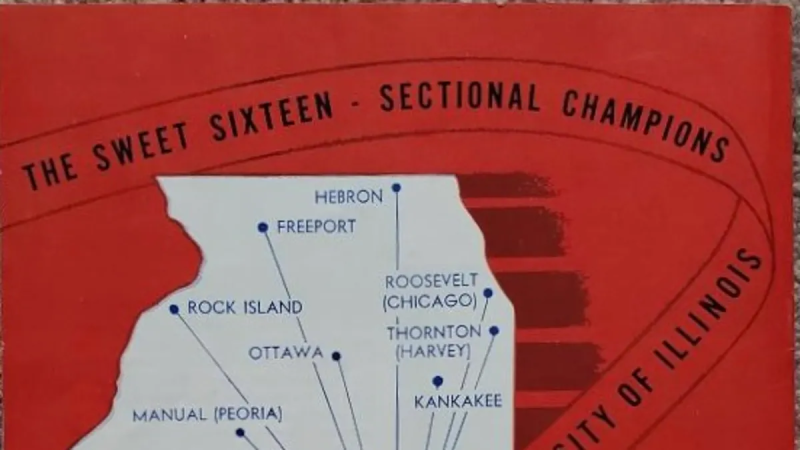
Program from the 1952 Illinois High School Association boys basketball tournament. High school basketball enjoyed such feverish fan support in Illinois, it was dubbed "March Madness" in 1952. (The Basketball Museum of Illinois)
Porter left his position as an executive with the Illinois High School Association in 1940, the year after he wrote his essay, to become executive secretary of the National Federation of State High School Associations.
He held the position until 1958, helping spread the concept of "March Madness" to high school basketball tournaments around the country.
He followed up his 1939 "March Madness" essay with a somber but more powerful 1942 poem: "The Basketball Ides of March."
He wrote it as World War II drew interest, and young men, away from the basketball courts of the American heartland and into the battlefields of Europe and Asia.
"Eagles fly and heroes die/beneath some foreign arch/let their sons thread where hate is dead/in a happy Madness of March." — H.V. Porter during WWII
"In a million lives where freedom thrives/And liberty lingers still/How eagles fly and heroes die/beneath some foreign arch/let their sons thread where hate is dead/in a happy Madness of March."
Land of iron hoops
Broadcaster Brent Musburger helped popularize Porter's "March Madness" before a national audience while covering the NCAA tournament for television.
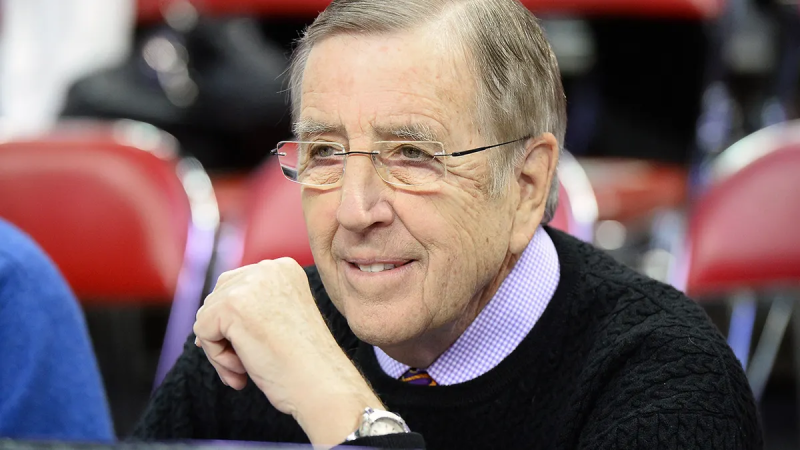
Sportscaster Brent Musburger helped popularize the phrase "March Madness" while covering the NCAA basketball tournament in the 1980s. He traces its origins to the Illinois high school basketball tournament, first described as "March Madness" in 1939. (Ethan Miller/Getty Images)
He first uttered "March Madness" on air during the 1982 NCAA tournament.
The tourney ended that year when an unknown 19-year-old University of North Carolina freshman hit the winning shot in the championship game against Georgetown.
His name was Michael Jordan.
MEET THE AMERICAN WHO CREATED NASCAR: BILL FRANCE SR., DAYTONA SPEED DEMON AND RACETRACK PIONEER
Musburger traces the phrase he popularized to Porter and to Illinois, where he worked as a young reporter in the 1960s after graduating from Northwestern.
"At that time, the Illinois high school basketball tourney was very much bigger than (NCAA) March Madness, which had not really taken off yet," Musburger, now the face of VSiN Network, told Fox News Digital in an interview.
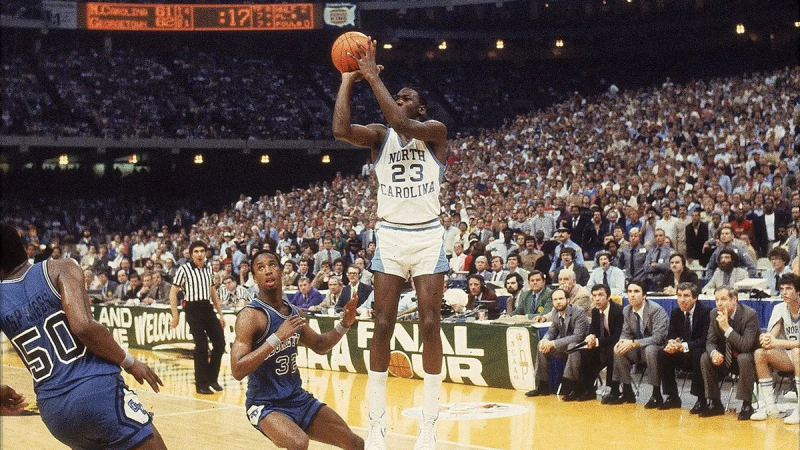
NCAA Final Four, North Carolina Michael Jordan (No. 23) in action, making game-winning shot vs. Georgetown, New Orleans, March 29, 1982. The term "March Madness" began to gain recognition at the collegiate level that year. (Heinz Kluetmeier/Sports Illustrated via Getty Images)
"Towns in the Midwest lived for high school basketball."
The Illinois high school tournament was so big in the 1960s that it spawned a madcap TV ad campaign by a Chicago auto dealer under the "March Madness" banner that included tourney scores from around the state.
"I cannot remember the name of the dealer or the brand of autos he was selling," Musburger said. "But it was a big deal in Chicago in the 1960s, especially with big-city high schools making inroads into the tournament" — long ruled by small rural schools.
The broadcaster recalled those enthusiastic ads and the madness displayed for Illinois high school basketball when he began using "March Madness" to describe the NCAA tournament.
Small-town March Madness reached its zenith in Illinois in 1952, when tiny Hebron High School, with a student body of just 95 kids, made it all the way to the state finals in Champaign.
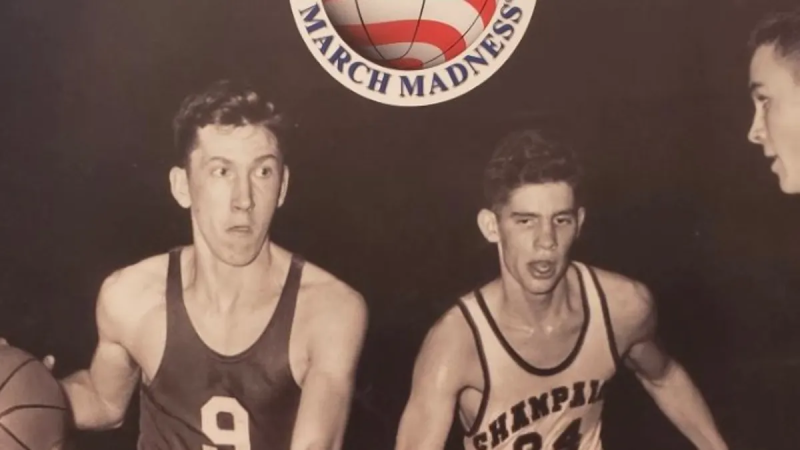
Hebron High School star Phil Judson is shown driving with the ball in the 1952 Illinois High School Association boys basketball tournament. Tiny Hebron High beat much larger schools to win the state title in 1952. Its shocking success is considered an inspiration for "Hoosiers," about a similarly small high school that beats larger teams to win the Indiana state title. (The Illinois High School Association)
"Hebron became a basketball community years earlier, a really good basketball community," star of the 1952 team, Phil "Swish" Judson, told Fox News Digital.
Amazon and sports superstores didn't exist back then. So Hebron's basketball coach years earlier enlisted a local blacksmith to forge hoops from iron so that Hebron kids could hang them from trees or barns and shoot baskets at home.
Swish Judson still has one of those iron hoops today.
The primitive hardware worked. Little Hebron High shocked Illinois basketball by winning the 1952 state title — toppling mighty Quincy High School. With its student body of 1,400 kids, Quincy's high school was three times larger than the entire town of Hebron.

An early-era laced basketball, used by Mount Vernon High School in its 1920 Illinois state championship season. H.V. Porter, the Illinois administrator who coined "March Madness," also pioneered the use of molded basketballs, making laced versions obsolete. (Mount Vernon High School/The Basketball Museum of Illinois)
Judson and his teammates, including brother Paul, were feted by what Firchau of The Illinois Basketball Museum called "the longest parade in Illinois history" — he estimates 80 to 100 miles long.
He can still chronicle the cavalcade town by town: "From Morris to Yorkville, up 47 through Sugar Grove, all the way up through Elgin, through Woodstock and around the town square twice when they eventually got to Hebron."
For more Lifestyle articles, visit www.foxnews.com/lifestyle
Years later, the Judson boys were watching the 1986 movie "Hoosiers."
It's the story of fictional small-town Hickory High School, which miraculously beats a larger city school to win the state title. "Hoosiers" lore says it was inspired by 1954 Indiana state champion Milan High School.
But it struck close to home for the 1952 Illinois schoolboy basketball heroes.
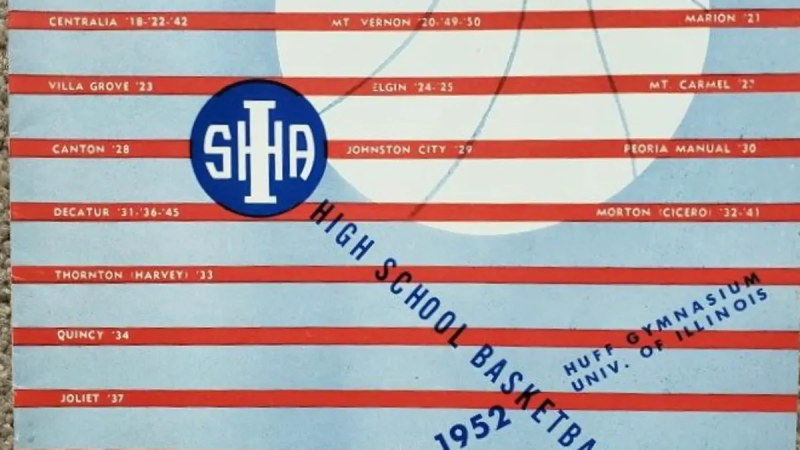
Hebron High School, with just 95 students, won the Illinois state high school basketball championship in 1952, toppling teams from much larger schools on the way. Illinois basketball enthusiasts say it was one of the inspirations for the movie "Hoosiers." (The Basketball Museum of Illinois)
Said Swish Judson, "A lot of things that took place in that film depicted Hebron."
Noted Firchau, "Illinois basketball doesn't take a backseat to anybody, including Indiana."
March Madness keeps society on ‘even keel’
Henry Van Arsdale Porter, the man who gave America "March Madness," died in St. Petersburg, Florida, on Oct. 27, 1975. He was 84 years old.
His ashes are interred today at Memorial Park Cemetery in St. Petersburg.
He and his longtime wife, Grace Kromminga, never had children.
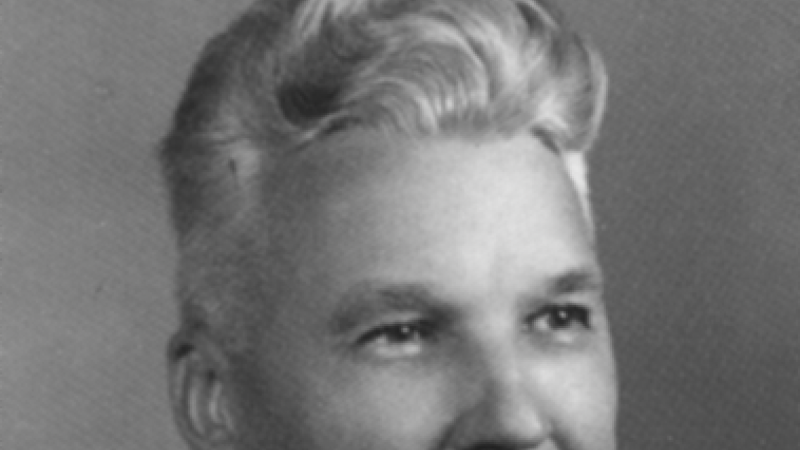
H.V. Porter was inducted into the Basketball Hall of Fame in 1960, but became best known in later years for coining the phrase "March Madness." (Illinois High School Association)
But his spirit lives on in the competitive zeal of American youth each March.
Porter was inducted into the Naismith Memorial Hall of Fame as the sole member of its 1960 and second class, largely for contributions outside the phrase "March Madness."
CLICK HERE TO SIGN UP FOR OUR LIFESTYLE NEWSLETTER
The NCAA tournament, meanwhile, now bearing the name he brought to life, is an American cultural behemoth.
The college athletic association gained the rights to "March Madness" after a long legal fight with the state of Illinois — the details of which have never been revealed.
"A little March Madness may complement and contribute to sanity and help keep society on an even keel." — H.V. Porter
"From its humble beginnings to its widely known usage today, the NCAA’s March Madness trademark represents a valuable asset that the NCAA fiercely protects," wrote intellectual property attorney Josh Gerben.
Added Gerben, "Over 85% of the NCAA’s yearly budget comes from the advertising and marketing of its three-week basketball tournament. As a result, the NCAA has a well-established reputation for protecting its ‘March Madness’ trademarks, the first of which was registered back in 1989."
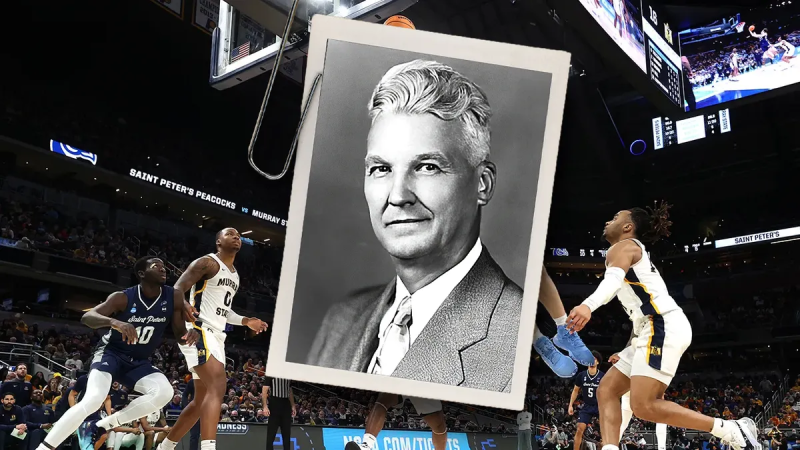
The St. Peter's Peacocks go up against the Murray State Racers during the second round of the 2022 NCAA Men's Basketball Tournament at Gainbridge Fieldhouse on March 19, 2022, in Indianapolis, Indiana. Illinois high school administrator H.V. Porter, inset, coined the term "March Madness." (Andy Lyons/Getty Images; Illinois H.S. Association)
Porter celebrated wholesome youthful pursuits on the hardwood in one of the most difficult times in American history, with the Great Depression lingering for a decade and war clouds looming overseas.
He found passion for basketball essential to the health of the nation in times of crisis.
CLICK HERE TO GET THE FOX NEWS APP
"A little March Madness," Porter wrote at the end of his March 1939 essay, "may complement and contribute to sanity and help keep society on an even keel."
To read more stories in this unique "Meet the American Who…" series from Fox News Digital, click here.
Disclaimer: The copyright of this article belongs to the original author. Reposting this article is solely for the purpose of information dissemination and does not constitute any investment advice. If there is any infringement, please contact us immediately. We will make corrections or deletions as necessary. Thank you.






